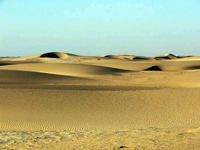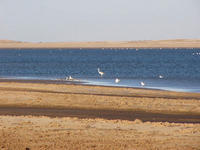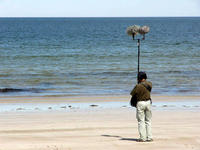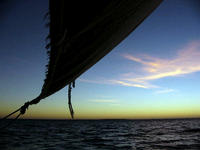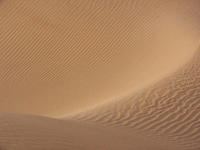You are in: Africa -> Mauritania -> Banc d'Arguin Nation... , and traditional search or Image Gallery will yield results of this site only
Banc d'Arguin National Park
| Site number: | 506 |
|
| Type of site: | Natural | |
| Date: | - | |
| Date of Inscription: | 1989 | |
| Location: | Africa, Mauritania, Nouadhibou and Azefal | |
Up to 75 images are shown here. Click on each for more details or on Image Gallery for more images.
| Description: | The park with its sand-dunes, coastal swamps, small islands and shallow coastal waters edges the Atlantic coast. The ruthless desert environment contrasting the biodiversity of the marine zone has produced a land- and seascape of exceptional natural significance. Various migrating birds wait out the winter within the Park, and a number of sea turtle and dolphin species, employed by the fishermen to draw in shoals of fish, can also be found there. --WHMNet paraphrase from the description at WHC Site, where additional information is available. | |
| The Banc d'Arguin National Park (French: Parc National du Banc d'Arguin) lies on the west coast of Mauritania between Nouakchott and Nouadhibou. The World Heritage Site is a major breeding site for migratory birds. A wide range of species include flamingos, broad-billed sandpipers, pelicans and terns. Much of the breeding is on sand banks including the islands of Tidra, Niroumi, Nair , Kiji and Arguim . The surrounding waters are some of the richest fishing waters in western Africa and serve as nesting grounds for the entire western region. The Banc d'Arguin National Park is a Nature reserve that was established to protect both the natural resources and the valuable fisheries, which makes a significant contribution to the national economy (Hoffmann, 1988), as well as scientifically and aesthetically valuable geological sites, in the interests of and for the recreation of the general public. The park's vast expanses of mudflats provide a home for over two million migrant shorebirds from northern Europe, Siberia and Greenland. The region's mild climate and absence of human disturbance makes the park one of the most important sites in the world for these species. The nesting bird population is also noted for its great numbers and diversity. Between 25,000 and 40,000 pairs belonging to 15 species, making the largest colonies of water birds in West Africa (IUCN Technical Evaluation, 1989). --Wikipedia. Text is available under the Creative Commons Attribution-ShareAlike License. | ||
| Source: | http://whc.unesco.org/en/list/506 | |
| Reference: | 1. UNESCO World Heritage Center, Site Page. | |













